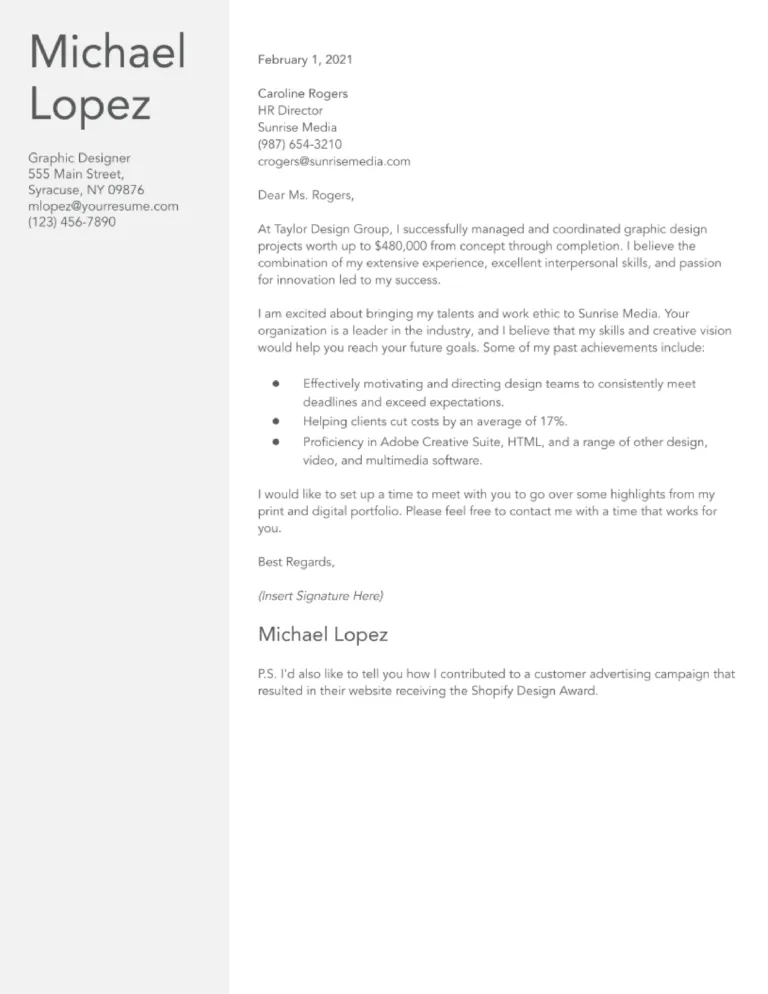Essential Cover Letter Elements
A well-crafted cover letter is your first impression on a potential employer in the competitive field of graphic design. It’s your opportunity to showcase your skills, passion, and personality beyond your resume and portfolio. A compelling cover letter can significantly increase your chances of landing an interview and ultimately, your dream job. This guide will equip you with essential tips to create an outstanding graphic design cover letter, tailored for entry-level positions. We’ll delve into the crucial components, formatting, and content strategies that will make your application stand out from the crowd. Remember, a strong cover letter is not just a formality; it’s a powerful tool to communicate your unique value proposition to the hiring manager.
Contact Information
Accurate and professional contact information is fundamental. It’s the gateway for the employer to reach out to you. Make sure all your details are up-to-date and easily accessible. Proper formatting shows attention to detail, a key characteristic of a good graphic designer. It’s the first impression you make – so make it count.
Applicant’s Name and Contact Details
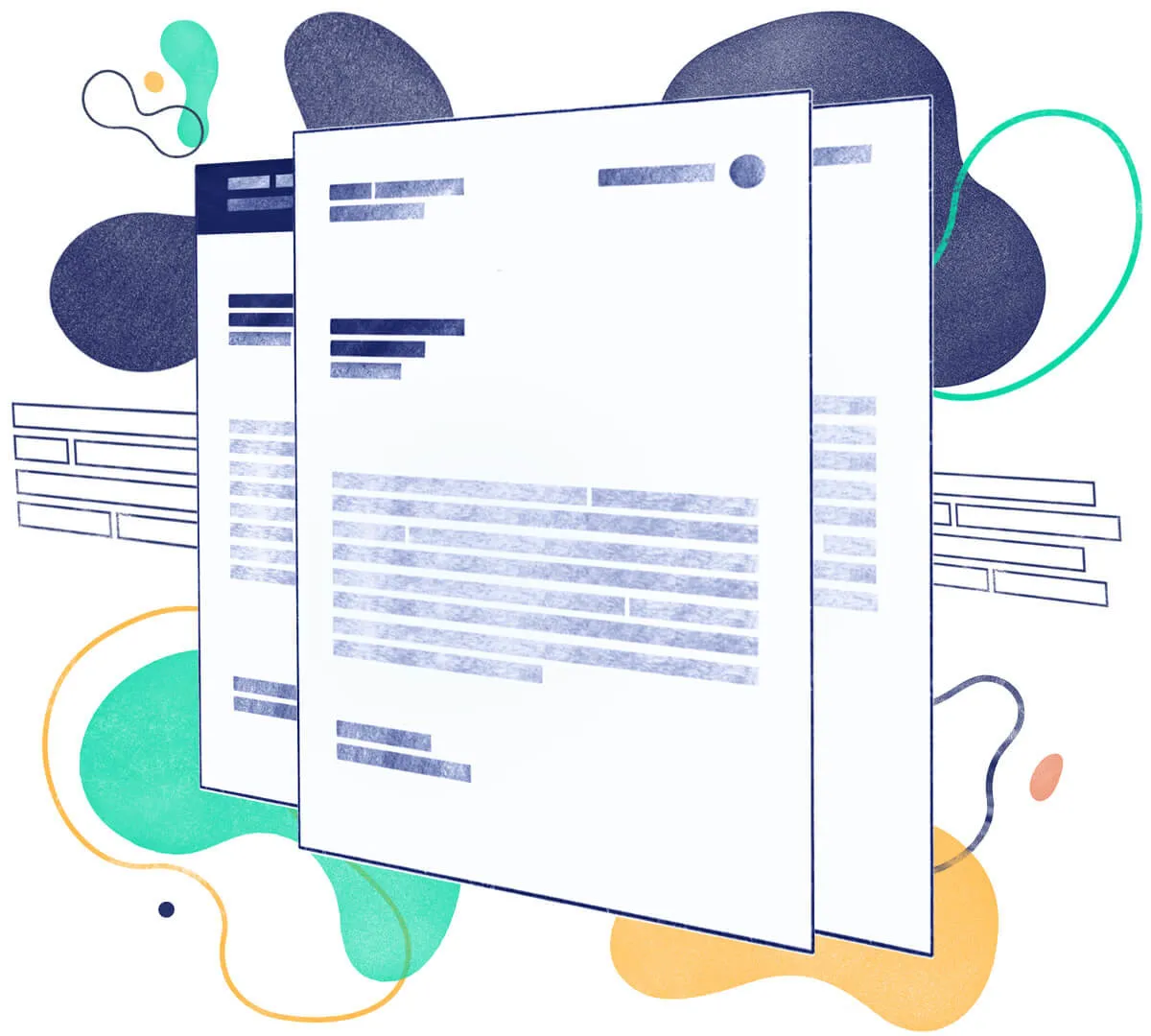
At the top of your cover letter, include your full name, phone number, professional email address, and optionally, your LinkedIn profile URL or online portfolio link. Ensure your email address sounds professional (e.g., firstname.lastname@email.com) and not a casual or outdated one. Double-check that your phone number is correct and that your voicemail is set up professionally, in case the hiring manager calls.
Hiring Manager’s Information
Research the hiring manager’s name and title. If this information isn’t readily available, use a general salutation like ‘Dear Hiring Manager’. Using the hiring manager’s name makes your cover letter more personal and shows you’ve taken the time to research the company and the role. This level of personalization can set you apart from other applicants who send generic applications. Always double-check the spelling of the hiring manager’s name.
Address the Right Person
Addressing your cover letter to a specific person shows initiative and genuine interest. It demonstrates that you’re not just sending out a mass application. Look for the hiring manager’s name on the job posting, the company website, or LinkedIn. If you can’t find a name, it’s better to use a generic greeting like ‘Dear Hiring Team’ or ‘Dear [Company Name] Hiring Manager’ than to address the letter to the wrong person. This is a small but significant detail that can significantly improve your chances.
Crafting a Compelling Opening
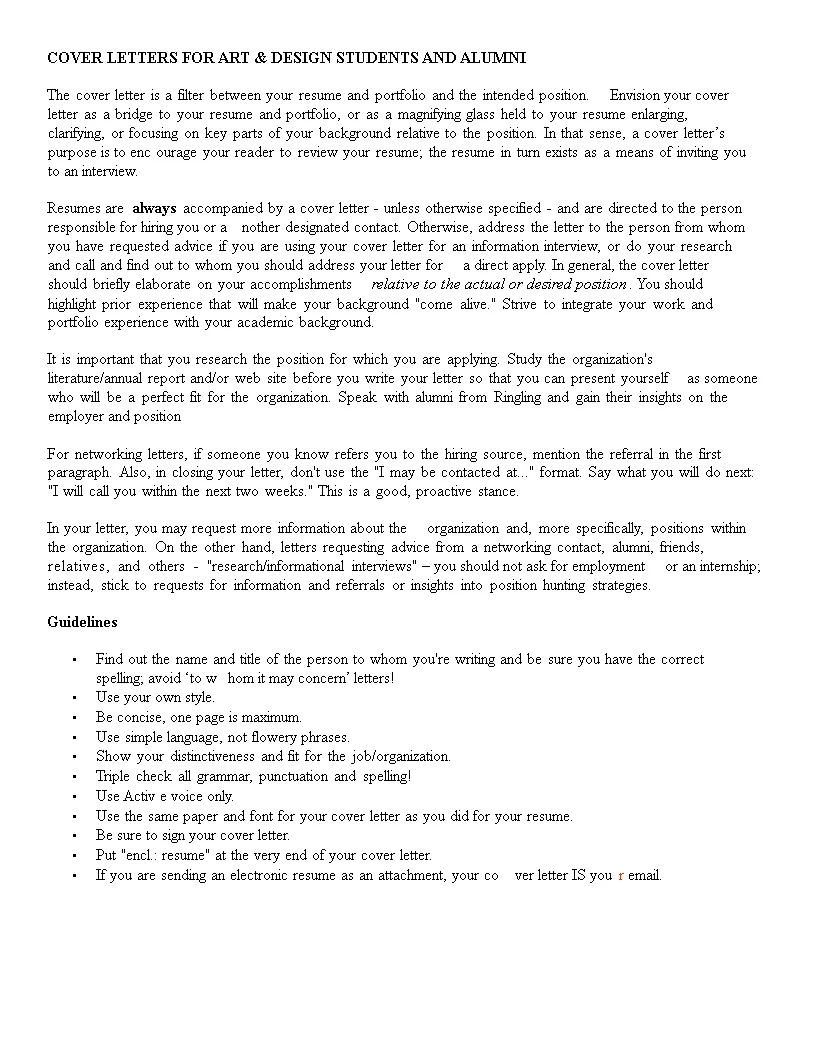
The opening paragraph of your cover letter is critical; it’s your hook. It should immediately grab the reader’s attention and make them want to learn more about you. Avoid generic openings like ‘I am writing to apply for the position…’ and instead aim for something more engaging and personalized. Clearly state the position you’re applying for and briefly mention where you saw the job posting. Then, quickly highlight your key qualifications or a unique skill that aligns with the job requirements. Your goal is to create immediate interest and demonstrate why you’re a strong candidate. Your introduction is a strategic area to emphasize your enthusiasm and summarize the main reasons why you are the best fit for the job.
Expressing Enthusiasm and Purpose
Express genuine enthusiasm for the role and the company. Explain why you’re interested in this specific opportunity, and how it aligns with your career goals. Show that you have researched the company and understand their mission, values, and recent projects. This demonstrates your sincere interest and makes you appear more invested in the position. Tailor your enthusiasm to each application and explain what resonates with you about the company. Your enthusiasm shows that you are eager to learn and contribute.
Highlighting Relevant Skills and Experience
Focus on showcasing your skills and experience that align with the job description. Even if you’re an entry-level candidate, highlight any relevant projects, internships, or coursework. Provide specific examples of your work, rather than just listing skills. For instance, instead of saying ‘Proficient in Adobe Photoshop,’ you can say ‘Utilized Adobe Photoshop to create marketing visuals, resulting in a 15% increase in social media engagement.’ This section is where you prove that you have the necessary skills and experience to excel in the role. It is essential to show, not just tell, by providing concrete examples and accomplishments.
Showcasing Design Skills
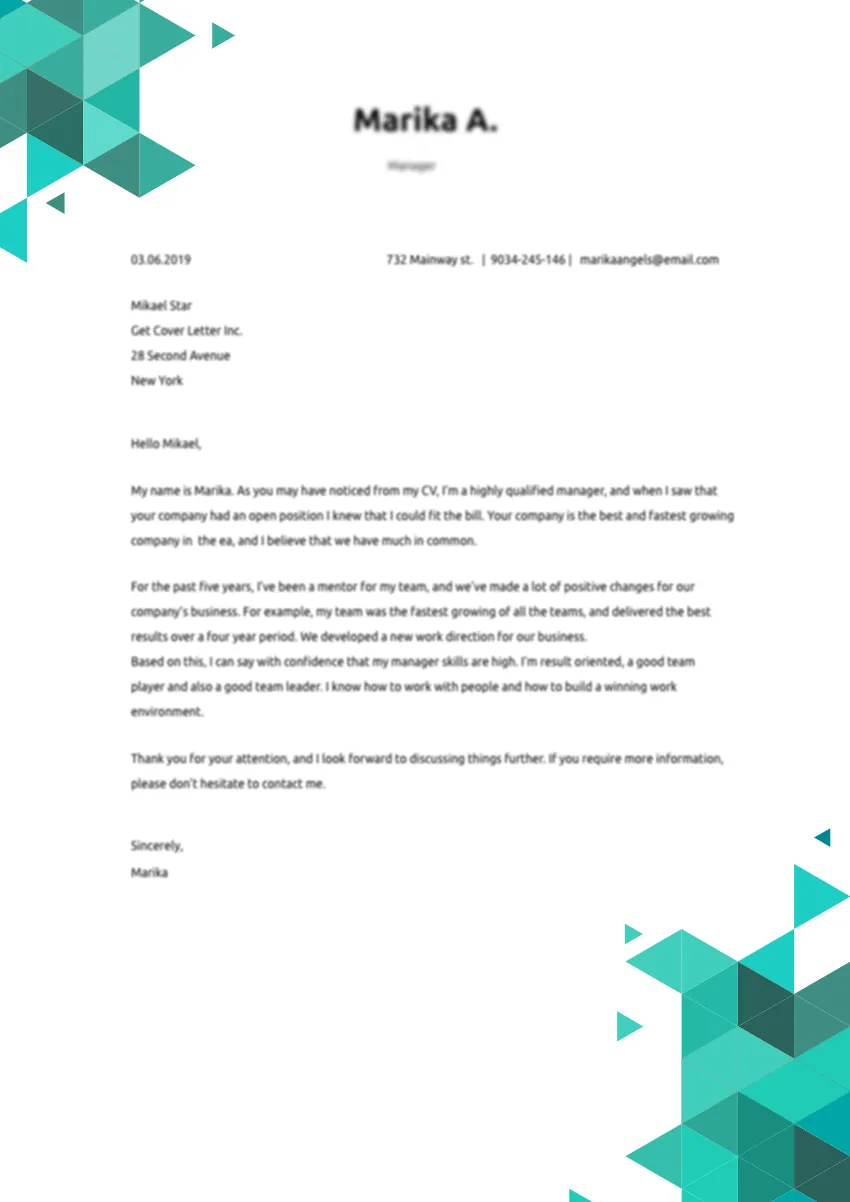
Emphasize your design skills, such as your knowledge of typography, color theory, layout, and branding. Include examples of your work in your portfolio that demonstrate these skills. If the job description emphasizes particular design areas (e.g., web design, print design), tailor your examples to match. Use the STAR method (Situation, Task, Action, Result) to describe your projects and accomplishments. This method provides a clear, concise way to describe your contributions and outcomes.
Mentioning Specific Software Proficiency
List the design software you are proficient in, such as Adobe Creative Suite (Photoshop, Illustrator, InDesign), Sketch, or Figma. Be specific and mention your level of proficiency (e.g., ‘proficient in Adobe Photoshop and Illustrator’). If you have experience with other design tools or platforms, include them as well. Ensure that the software mentioned aligns with the requirements of the job posting. Avoid simply listing software; briefly describe how you have used the software in your previous projects. This detail shows you are ready to hit the ground running.
Quantifying Achievements
Use numbers to quantify your achievements whenever possible. This makes your accomplishments more impactful and demonstrates your ability to deliver results. For example, instead of saying ‘Improved social media engagement,’ say ‘Increased social media engagement by 20% through the use of creative graphics and targeted content.’ Numbers provide concrete evidence of your capabilities and demonstrate the value you can bring to the company. Any time you can provide a measurable outcome, you should.
Using Numbers to Showcase Accomplishments
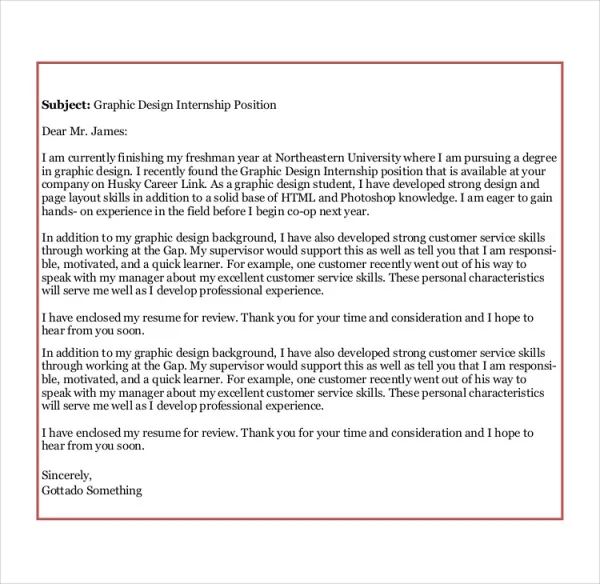
Numbers can significantly strengthen your cover letter by making your achievements tangible and credible. Use specific figures to highlight your successes. Instead of stating you worked on many projects, mention the number of projects you completed. If you have increased website traffic, specify the percentage increase. Quantifying your achievements not only shows your impact but also helps the hiring manager understand the value you bring to the table. Quantifiable results make a more convincing case for your abilities. The more data you can include, the more impressive your cover letter will be.
Demonstrating Knowledge of Design Principles
Show your understanding of fundamental design principles, such as balance, contrast, hierarchy, and unity. Discuss how you apply these principles in your work. Provide examples of how you’ve used design principles to solve a problem or achieve a specific goal in your projects. Demonstrate your ability to create visually appealing and effective designs. The demonstration shows you have a solid foundation in design and can create high-quality work. Reference specific projects and provide brief descriptions, highlighting the design principles used.
Illustrating Understanding of Typography
Typography is crucial in graphic design. Mention your knowledge of different fonts, their usage, and how you use them to enhance visual communication. Explain how you use typography to create hierarchy and visual interest. Mention your experience with font pairing and selecting appropriate fonts for different projects. Show your expertise in typography to emphasize your attention to detail and understanding of visual design. Describe how you have used typography to enhance readability and the overall effectiveness of your designs.
Demonstrating Creativity and Problem-Solving Skills

Graphic design is about creativity and problem-solving. Give examples of how you approached design challenges creatively and developed innovative solutions. Discuss your brainstorming process, how you overcome obstacles, and how you incorporated feedback. Highlight projects where you had to find innovative ways to solve a design problem or meet a client’s needs. By illustrating your ability to think creatively and solve design problems, you demonstrate your versatility and value to the company. Your creativity and innovative approach is invaluable in the dynamic world of graphic design.
Crafting a Strong Closing
The closing paragraph is your final chance to make an impression. It should reiterate your interest in the position and company, and express your enthusiasm for the opportunity. Always thank the hiring manager for their time and consideration. Provide a call to action by expressing your availability for an interview or further discussion. Keep the tone positive and professional. Make sure to show your confidence and eagerness to discuss your qualifications further. Ending your cover letter with a strong close leaves a lasting impression. This reiterates your interest and enthusiasm for the role.
Expressing Gratitude and Encouraging Contact
Thank the hiring manager for their time and consideration. Reiterate your interest in the position and the company. State that you are available for an interview and eager to discuss your qualifications in more detail. Provide your contact information again, to ensure it’s readily available. Using a professional closing such as ‘Sincerely’ or ‘Best regards’ is best practice. Your closing should leave the hiring manager with a positive and memorable impression, encouraging them to contact you.
Proofreading and Editing
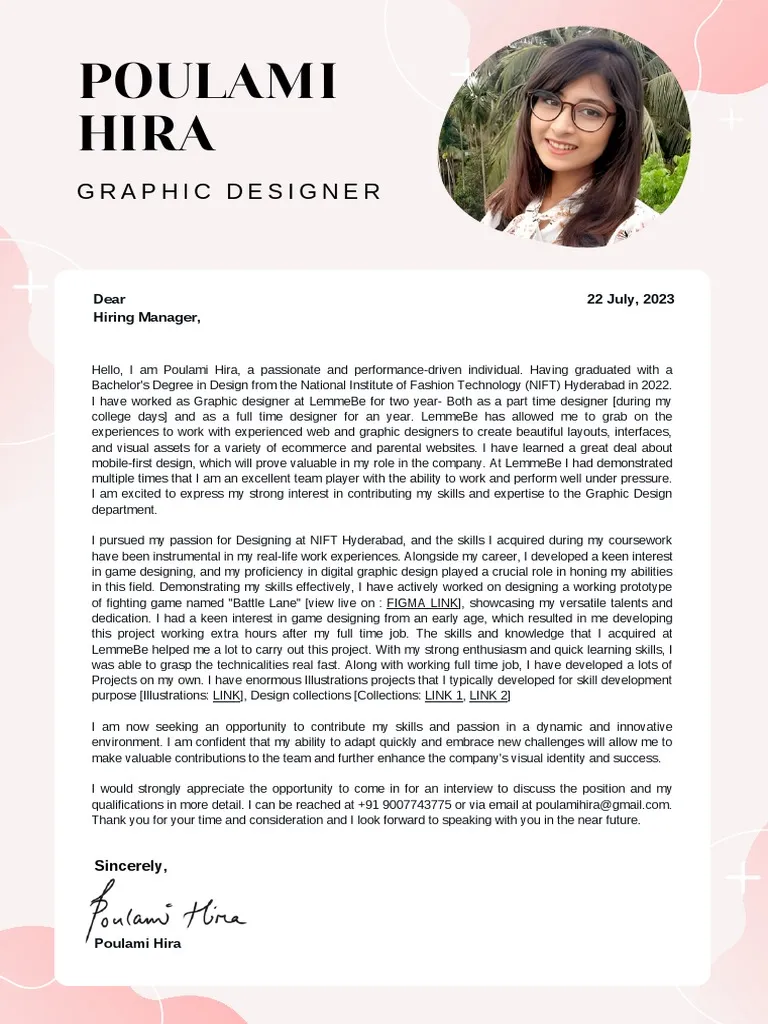
Proofreading and editing are critical steps to ensure your cover letter is polished and professional. Errors can undermine your credibility and make you look careless. Thoroughly review your cover letter for any grammatical errors, spelling mistakes, punctuation issues, and formatting inconsistencies. Read it aloud to catch any awkward phrasing or sentences. It’s also helpful to have a friend or colleague proofread your cover letter. They might catch errors that you have missed. A flawless cover letter shows attention to detail, a key skill for graphic designers.
Ensuring Error-Free Content
Before submitting your cover letter, ensure there are no grammatical errors, spelling mistakes, or typos. Use grammar checkers and spell-check tools, but don’t rely on them completely. Always proofread your work manually. Read the letter aloud to catch any awkward phrasing or run-on sentences. Check for consistency in formatting and style. Pay close attention to the use of punctuation, and ensure you haven’t missed any commas or periods. A polished cover letter shows you take pride in your work and value precision.
Formatting and Design of the Cover Letter
The layout and design of your cover letter should reflect your graphic design skills. Although a cover letter is primarily text-based, the formatting choices can demonstrate your design sensibilities. Choose a clean, professional layout, and ensure the formatting is consistent throughout the document. Avoid using overly complex or distracting designs. Your goal is to make the content easy to read while showcasing your design skills.
Choosing a Professional Font
Select a professional and readable font, such as Arial, Calibri, or Helvetica. Ensure the font size is easy to read (typically 11 or 12 points). Avoid using overly stylized or decorative fonts that might distract from the content. The font choice is a reflection of your design sensibilities. It is important to choose a font that is both aesthetically pleasing and easy to read, allowing the hiring manager to focus on your qualifications. Consistency is key, so avoid mixing multiple fonts in your cover letter.
Maintaining Consistent Formatting
Maintain consistent formatting throughout your cover letter. Use the same font, font size, and spacing. Ensure consistent use of headings, bullet points, and margins. Proper formatting makes your cover letter easy to read and shows attention to detail. Consistent formatting reflects your professionalism. Avoid using excessive bolding, italics, or underlining, which can be distracting. Clean and organized formatting enhances readability and helps the hiring manager process the information effectively. Ensure that your formatting choices align with the overall tone of your cover letter.
Adapting to Different Job Applications
Each job application requires a unique approach. Do not use the same cover letter for every job. Tailor your cover letter to the specific requirements of the role and the company you are applying to. Review each job description carefully and highlight the skills and experiences that match those requirements. Customize your cover letter to address the needs of each position, demonstrating your understanding of the specific demands of the role and what the company is looking for. Customization shows your genuine interest and that you took the time to prepare a personalized application.
Tailoring to Job Descriptions
Carefully read the job description and identify the key skills, qualifications, and experiences the employer is looking for. Use the keywords and phrases from the job description throughout your cover letter. Highlight your relevant skills and experience to align with the employer’s needs. Provide specific examples of how your skills and experience meet the requirements. This demonstrates that you have carefully read the job description and can contribute effectively to the role. Use the STAR method to provide context and demonstrate how your skills directly address the job requirements. Tailoring your cover letter to a job description will significantly improve your chances of success.
Researching the Company
Research the company you’re applying to. Understand their mission, values, recent projects, and clients. Mention your interest in the company and what attracts you to their work. Understanding their branding and style can help you customize your cover letter to align with their aesthetic. Tailoring your cover letter to the company’s style and brand demonstrates your initiative and genuine interest. This shows that you are invested in their success and that you have an understanding of their design philosophy.
Creating a Portfolio Link
Include a link to your online portfolio in your cover letter. Your portfolio is the best way to showcase your design skills and the quality of your work. Make sure your portfolio is up-to-date, well-organized, and includes your best projects. Ensure that your portfolio is easy to navigate and that it highlights your most relevant skills. Provide a clear and direct link to your portfolio so the hiring manager can easily view your work. Your portfolio will give the hiring manager a more comprehensive view of your skills, so make it a priority. The portfolio should reflect the quality of work you can produce and should make a good first impression.
